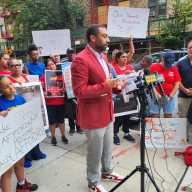There have been times the Bronx was deemed the next big thing, only to see interest wane. But this time, the interest may actually be very real
That was the opinion of some prominent Bronx developers at a forum hosted by the Urban Land Institute of New York at the Bronx Museum, of the Arts on Tuesday, July 12.
“This time feels a little bit different,” said Guy Leibler, president of Simone Healthcare Development. “Part of that is land speculation, and that hasn’t happened by accident. There have been smart investments in developments where developers see value. I think we’re seeing an increasing job base in the Bronx.”
He cautioned that poverty and substandard housing in the Bronx still had to be addressed before it could truly flourish.
Leibler spoke about his Hutchinson Metro Center development in the northeast Bronx, which mixes healthcare facilities and retail with a satellite campus of Mercy College.
Expansion plans call for the addition of workforce housing for medical and academic fields, he said.
Brenda Rosen, president of Breaking Ground, a non-profit which specializes in supportive housing for high risk populations such as veteran and seniors, said her company once had difficulty filling units in the Bronx.
That is no longer the case, she said. However the recent surge in property values and building costs make the supportive housing she specializes in harder to build.
“The cost of land has really made it more challenging for us, who cannot compete against private market developers,” she said. “We rely heavily on city (Request For Proposals).”
BRP Development’s Andy Cohen said that the Bronx has one big draw that is getting noticed: its convenient location, which makes it attractive for those priced out of Manhattan and Brooklyn.
“People are getting so far out into the outer boroughs where it gets affordable to live. And you can move to the Bronx where it is very close to where they work and pay less than they would in areas of Brooklyn and Queens” Historically, there has been a lot of land in the Bronx owned by the city, Cohen said.
The NYC Housing Preservation and Development worked to convert much of that land to affordable housing, he said.
Cohen’s La Central project in Melrose mixes market rate and affordable units, as well as retail and public community spaces.
“Right now what you see in Bronx, especially the south Bronx, is that the city has created a market for affordable housing, so from a private perspective it is difficult to get banks to invest in market rate, especially in the south Bronx,” he said.
As for changing the perception of the Bronx as a dangerous, poverty-stricken area, panelist said there was still work to do, but the future looked promising.
“When you see developers coming into a borough from Manhattan who never would have come in five or ten years ago, that tells you we’ve crossed a line,” Leibler said. “There is an excitement.”






















